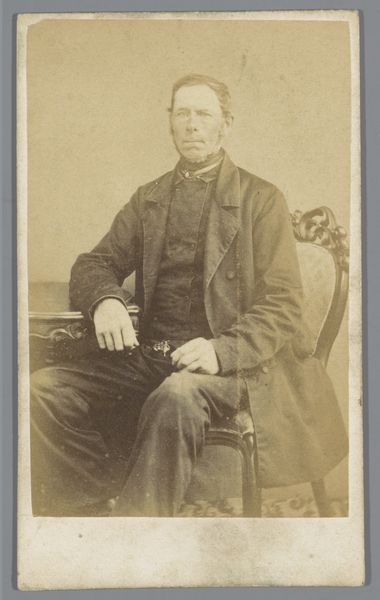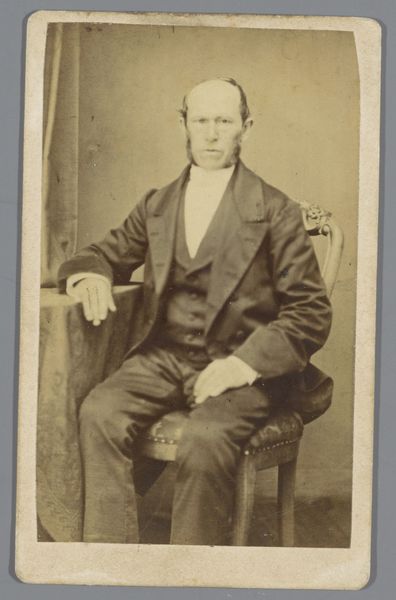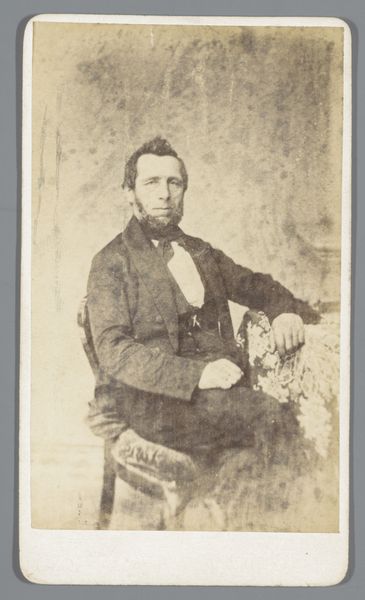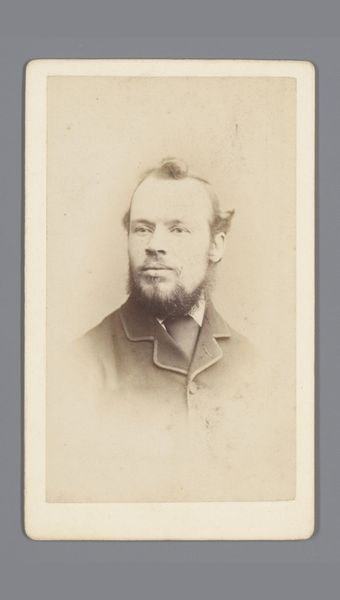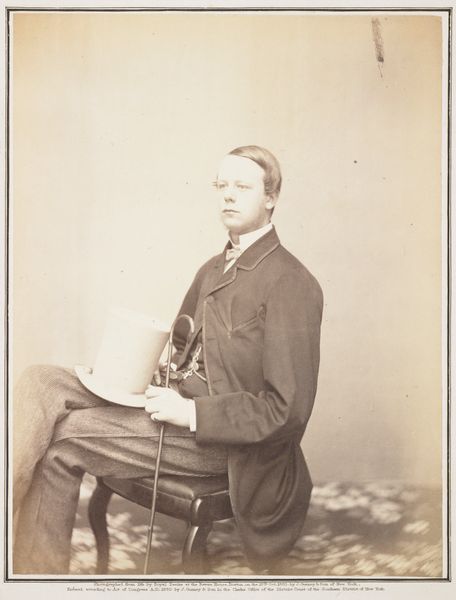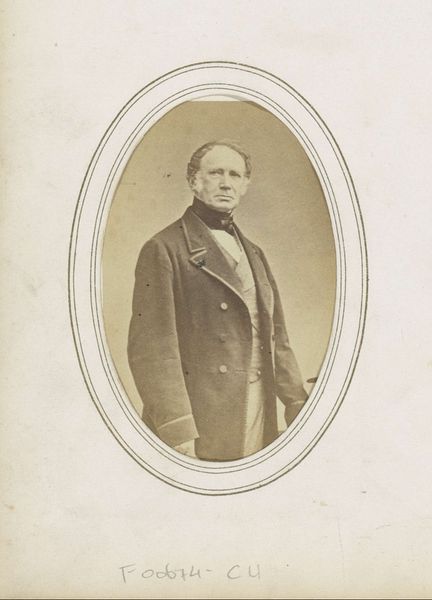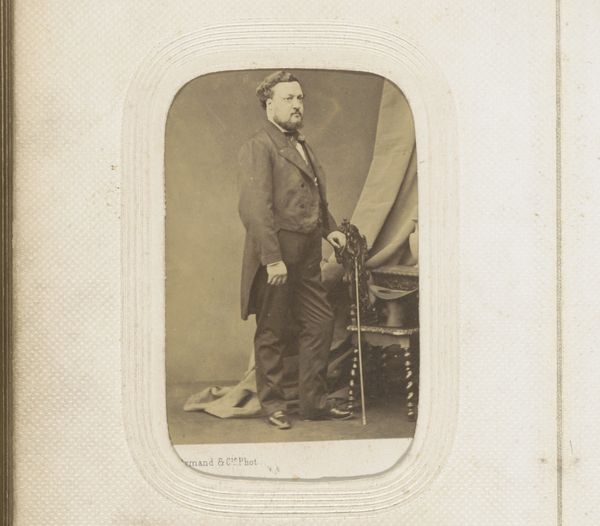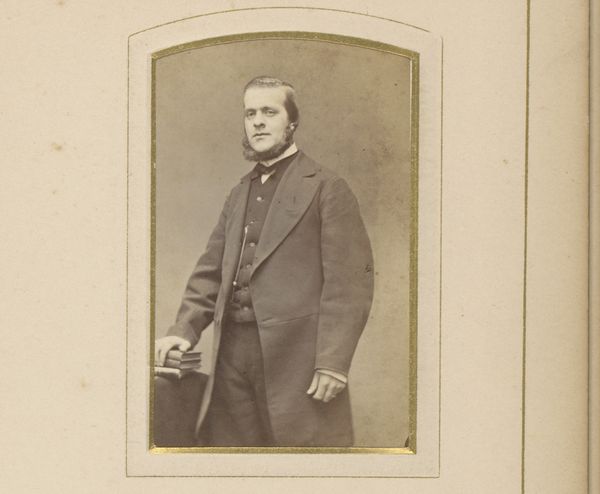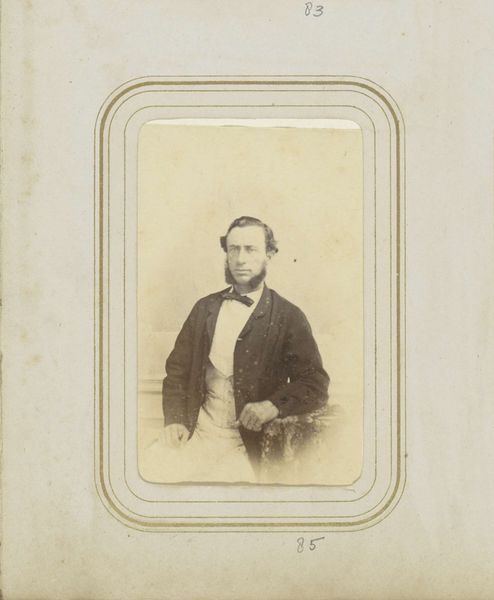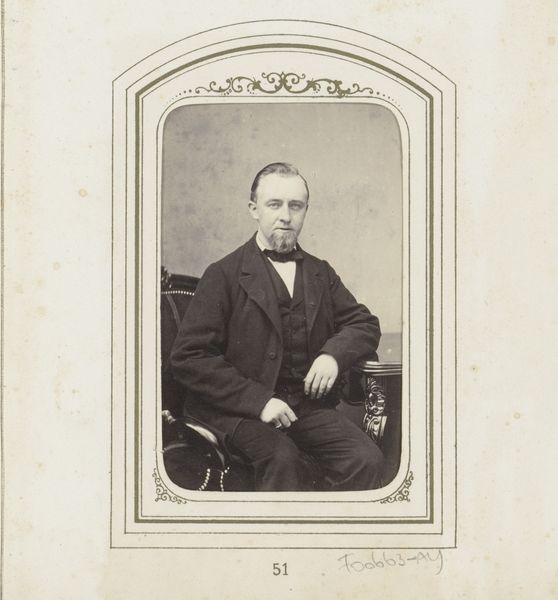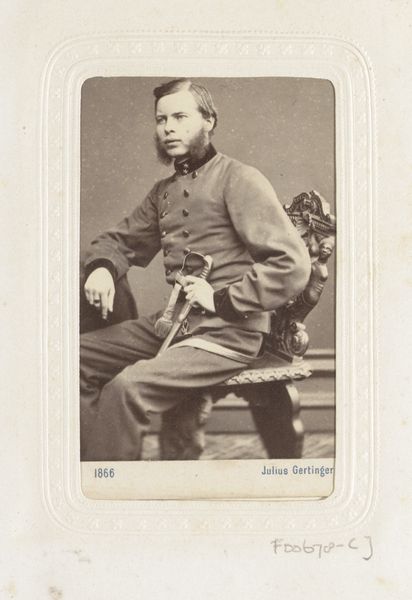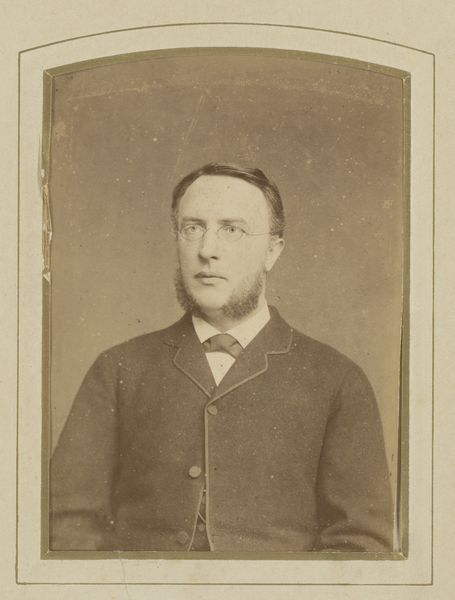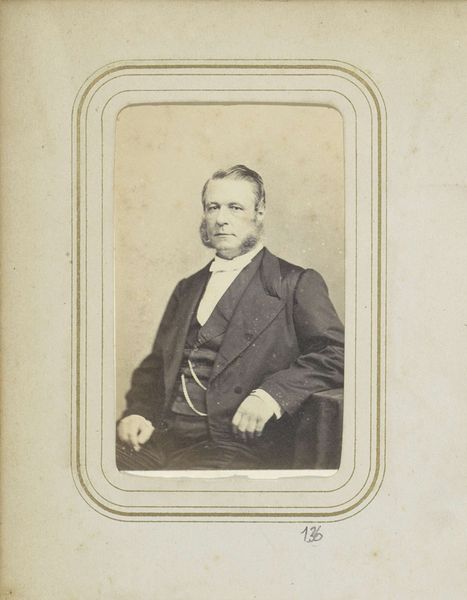
photography, gelatin-silver-print
#
portrait
#
photography
#
gelatin-silver-print
#
19th century
#
realism
Dimensions: height 101 mm, width 62 mm
Copyright: Rijks Museum: Open Domain
This photograph of an unknown seated man was made by Willem Tinker, using the albumen print process. The artist would have started with a glass negative, then coated paper with albumen derived from egg whites and silver nitrate. The resulting print is characterized by its fine detail and tonal range. This highly skilled process became increasingly common from the 1850s onward, requiring expertise in chemistry and darkroom techniques. The photograph’s material quality is influenced by these methods; its sepia tone and smooth surface are direct results of the materials used. Notably, the rise of photography coincided with industrialization, reflecting the era's values of reproducibility, efficiency and labor. Though distinct from mass production, photography enabled the wide distribution of images, impacting how individuals were represented and viewed within society. Understanding the material and processes behind the artwork is crucial to understand the values of the era in which the artwork was made.
Comments
No comments
Be the first to comment and join the conversation on the ultimate creative platform.
